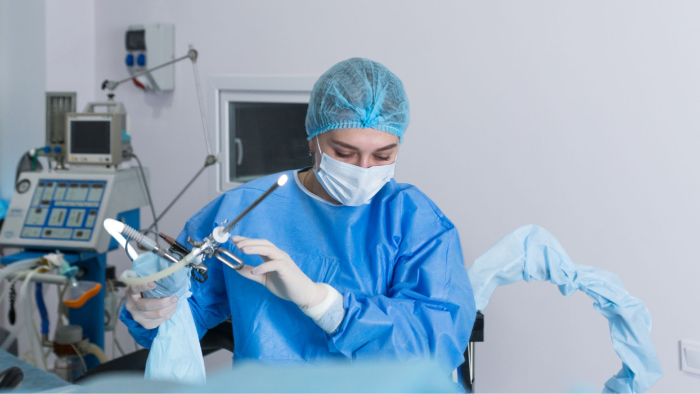Hysteroscopy surgery
Home > Treatments > Hysteroscopy surgery

A hysteroscopy is a procedure in which your doctor inserts a small-diameter device into your uterus. This device has a light and a small camera on the end to allow the doctor to see inside your uterus.
There are a number of situations in which your doctor may recommend this procedure. It can be used for either surgical or diagnostic purposes. It may be used:
- For visual examination of uterine cavity prior to IVF/UCSI
- To aid in the removal of fibroids and polyps
- In conjunction with a laparoscopic procedure
- To discover any malformation of the uterus
Your primary doctor may refer you to a specialist for this procedure. The procedure will take place with you in the same position as you’re normally in for a gynecological exam, with your feet in the stirrups at the end of the exam table.
During a hysteroscopy:
The doctor will first hold the cervix with a tool called a speculum. This is also like what happens during a gynecological exam.
The doctor will then insert the hysteroscopy device in through your vaginal opening. They will continue moving it through the cervix and then into the uterus.
A liquid or carbon dioxide gas will then be gently sent into your uterus through the device to clear the surface and to help widen it slightly.
The light and camera on the end of the hysteroscope allow the doctor to see the uterus and fallopian tubes. This allows them to diagnose any issues or to perform any surgical procedures necessary.
If the procedure is being used for surgery, the surgical devices will also be put through the hysteroscope tube to perform the surgery.
The procedure is performed under anaesthesia. However, you may experience some cramping after the procedure. The extent of anesthesia you need will depend on the purpose of your hysteroscopy.
The procedure itself can take anywhere from just 5 minutes to 30 minutes depending on what’s being done.
For most diagnostic-only purposes, the hysteroscopy can be done in your doctor’s office with just local or regional anesthesia. This is typically true for the simple removal of small polyps as well. When the hysteroscopy is being used in conjunction with a more in-depth surgical procedure, it may be done in an operation theater. In that case, the doctor will use a regional or general anesthesia, depending on the extent of the surgery that’s required.
Please complete the form below to give us a bit of information about your needs. We will contact you as soon as possible to discuss how Dr Anupma Chopra Gynae & Fertility Specialist team can help you meet your goals.
.Our clinic is honoured to have provided complete care to thousands of patients seeking Gynae and Fertility related troubles.
Appoinment© 2022 Design and Developed by Duplex Technologies
Start Consultation with DR. ANUPMA CHOPRA +919914120992